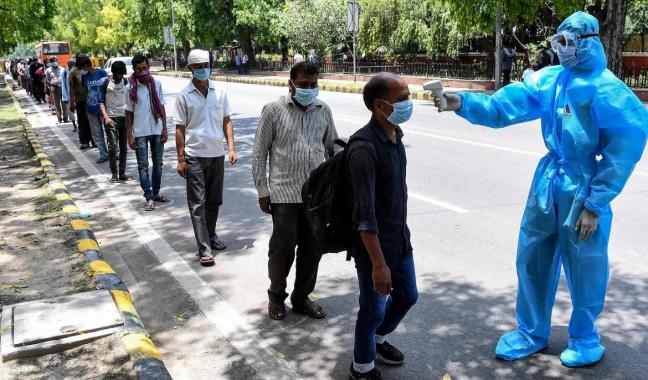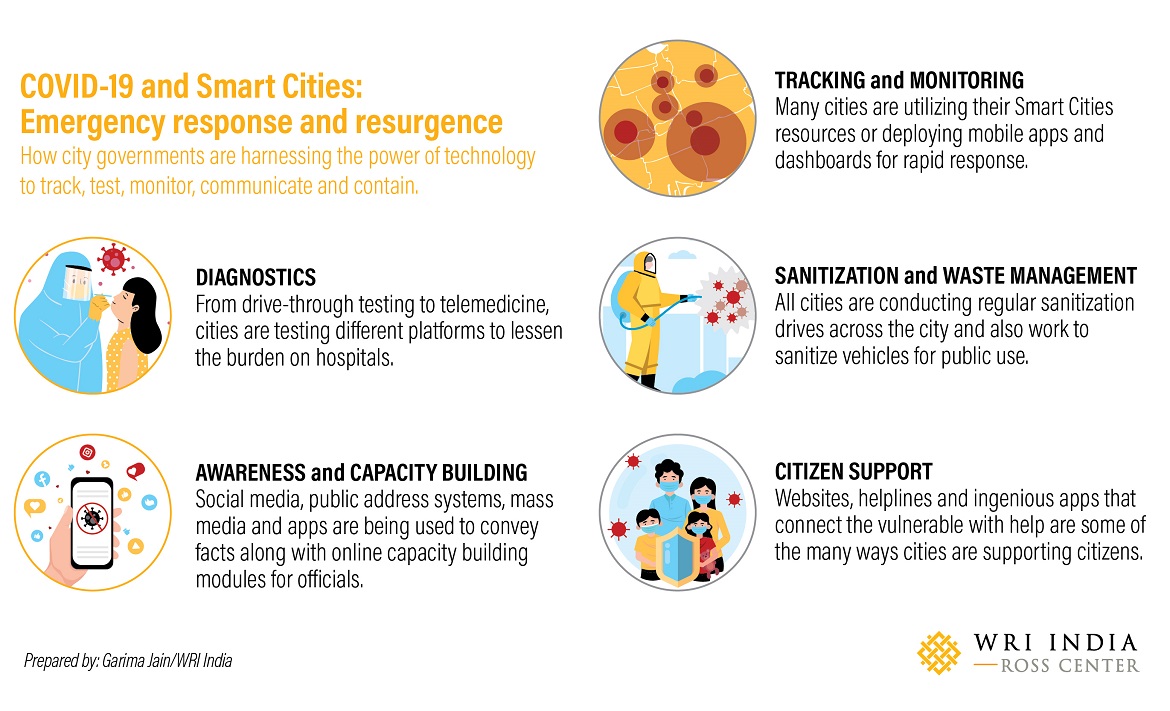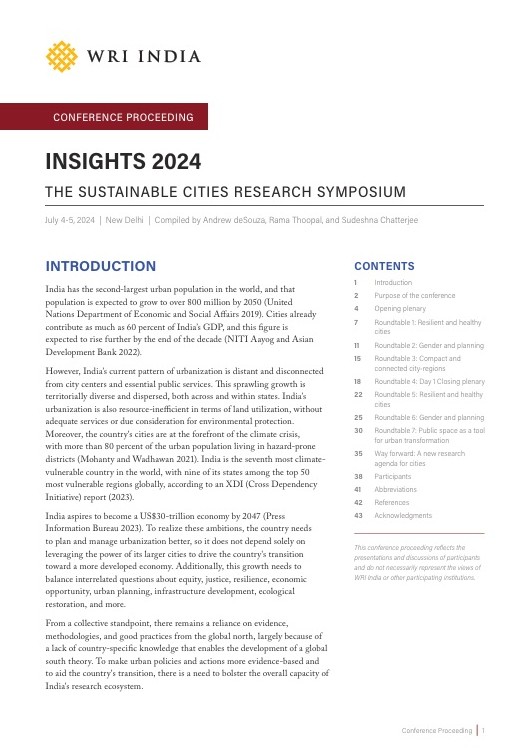COVID-19 and Smart Cities: Emergency response and resurgence
by -
Earlier this year, when the COVID-19 pandemic struck India, saving lives became the singular goal of the administration and frontline workers. Rising to the challenge, the city administration, health institutions, law and order authorities, community organizations, entrepreneurs and innovators, all joined forces to offer prompt support and access to essential supplies. Today, as the nation grapples to adapt to a new and constantly evolving normal (amid prevailing pandemic), it is imperative to reflect on and learn from how our cities have and are still responding to the crisis. During the pandemic, India’s 100 smart cities under Smart Cities Mission of Ministry of Housing and Urban Affair, have set an example of how innovation, technology and existing infrastructure can be harnessed to strengthen, balance and coordinate on-ground action during crisis. Below, we elucidate few examples of emergency actions taken by cities and discuss ways to adopt some in the coming time.

Emergency response and the new, evolving normal
Tracking and Monitoring: Many smart cities repurposed the existing Integrated Command and Control Center (ICCC) as war rooms for mapping COVID positive and quarantined cases, health workers’ deployment, tracking the virus spread, etc. They accordingly deployed measures such as drawing up containment plans, real-time mapping of food distribution, etc. Besides this, several smart cities used mobile apps in partnership with public sector, institutions and private sector to prepare dashboards for rapid response.
As per media reports, India is using at least 19 different apps to monitor the virus. While these mechanisms help public health officials to be better equipped, there are several data and privacy concerns around the collected information. However, the government of India has assured safety of collected data. The new normal can ensure formulation and implementation of consumer protection policies to ensure anonymity of data as well as facilitation of implementation limits.
Diagnostics: From drive-through testing to telemedicine, smart cities are using different platforms to lessen the burden on hospitals. Pune, for example, used COVID care booths for testing in hotspot areas. Telemedicine allowed administration to avoid direct contact with patients and address medical concerns. The rise in telemedicine has nudged the government to issue the long pending telemedicine guidelines.
Going forward this could be extremely helpful in easing the burden on overcrowded hospitals and ensuring that required assistance reaches patients. Aiming at digital health records for India’s population by 2022, telemedicine can prove to be a gamechanger for urban and rural areas alike.
Sanitization and Waste Management: All cities are conducting regular sanitization drives across the city. Several opted for drone sanitization to disinfectant hotspots, quarantine zones and containment areas, in a bid to prevent unnecessary footfalls. Cities like Rourkela, Vellore, Tirupur, Salem, etc., conducted their sanitation through Bhelmister, a disinfectant sprayer manufactured by Bharat Heavy Electricals Limited (BHEL), that can spray 2,000 liter of disinfectant in one go. Trained teams were deployed to dispose biomedical and other hazardous waste items.
As per data shared by the Central Pollution Control Board (CPCB) in August and September this year, India has generated 18,006 ton biomedical waste. In July, the Supreme Court, made it mandatory to follow the guidelines for handling, treatment, and disposal of biomedical waste.
Going forward these sanitization techniques and guidelines could come handy for regular disinfection of high footfall areas in cities. Besides, with increased use of masks and gloves on a regular basis, there is a need to launch mass awareness campaigns for educating citizens on proper disposal of these possible contaminants.
Awareness and Capacity Building: Social media platforms, Public Address Systems (PAS), and traditional media, are being used to convey facts along with capacity building of involved frontline workers. Thiruvananthapuram, for example, started a citizen awareness campaign called Break the Chain.
To build and sustain key systems, awareness and capacity building is a vital step. In the new normal, training and awareness processes that were set up as an emergency response could be reviewed and evolved for cities to adopt. An important learning from this emergency is that, gathering knowledge in a systematic way is key in allocating resources effectively.
Citizen Support: Websites, helplines, ingenious apps and volunteers that connect the vulnerable with help are some of the many ways’ cities are supporting citizens. During lockdowns, many cities worked to ensure the needy received shelter, essentials and food via community kitchens, state-run programs or through volunteers. Agra, for instance, launched the Sarvam Setu app that allows citizens to raise geo-tagged requests for essential services, emergency help, local alerts, etc., which is processed by volunteers or registered persons available within 300 meter range of the alert.
In the new normal, essential supply and emergency services can be extended for vulnerable groups and senior citizens as a regular provision. Plausible implementation could be through app-based platforms as well as by empowering RWAs, self-help groups and other similar community groups that are willing to extend their support.
New normal: Priorities and key requisites
As the nation eases into the new normal and cities evolve in their responses to the challenges; Collaboration, Access, Preparedness, and Privacy (CAPP), emerge as the key requisites. Urban management with priority areas such as healthcare, digital ecosystem, public transport, municipal service (water supply, sanitation, waste management, etc.), and public spaces will require greater government focus as well as better ways to partner with solution providers in the private domain.
Views expressed here are the author's own.


